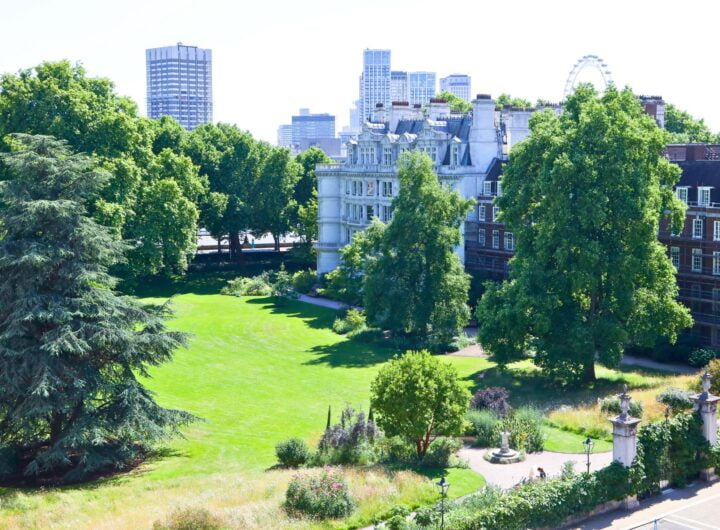See some of the best landmarks and attractions in Westminster lit up in spectacular fashion next week, as the capital illuminates for Lumiere London, a new and free light festival. From 14-17 January 2016, Lumiere London brings together some of the world’s most exciting artists working with light. Expect large-scale video-mapped projections, interactive pieces and jaw-dropping installations, transforming many of the capital’s most iconic streets and buildings in the West End and King’s Cross.
Amongst sights to see is Elephantastic by Catherine Garret and Top’là Design. Emerging stomping from a cloud of dust, an enormous elephant makes his slow, and heavy journey through the archways of Air Street. This extraordinary animated projection brings the sounds of the jungle to Central London as he trumpets his way through the Regent Street area.
At BAFTA 195 Piccadilly, experience an exploration of different genres of cinema and television using images from BAFTA’s archive. The visuals hark back to the origins of 195 Piccadilly as the home of the Royal Society of Watercolour Painters. The animation, by motion design experts NOVAK, is accompanied by a striking soundtrack, created by Ed Carter and inspired by the classic sounds that helped define these genres of film and television.
In the heart of ‘Theatreland’, Neon Dogs by Deepa Mann-Kler brings together 12 neon dogs inspired by balloon dogs at children’s parties. Grouped together near Trafalgar Square, these colourful canines, complete with bones, leads and dog mess, bring out the big kid inside all of us. Deepa Mann-Kler first produced this installation for Lumiere Derry~Londonderry in 2013, and has a growing interest in working with neon.
Nestled amongst Mayfair’s world famous Michelin-starred restaurants, including Le Gavroche, Kai, Hélène Darroze at The Connaught and Fera at Claridge’s, is Lightbenches by Bernd Spiecker for LBO LichtBankObjekte. Illuminating the park benches of Grosvenor Square, this is street furniture with a difference, a unique resting point that transforms the concept of public seating. Lit by hundreds of LEDs, the Lightbench allows you to take the weight off your feet and strike up a conversation with a stranger.
Bernd Spiecker’s first bench was made in 1982 using acrylic material. He has since developed the idea of Lightbenches, seeing them as symbols of recreation. He plans to build 100 across the world in the hope that they will bring people together in conversation.
The four-day Lumiere London light festival runs from 14-17 January across Piccadilly, Regent Street and St James’s, Trafalgar Square and Westminster, Mayfair and King’s Cross. The easiest, most leisurely way to discover the spectacular installations at Lumiere London 2016 is by foot. Download the map or get the app for your iPhone or Android device.





